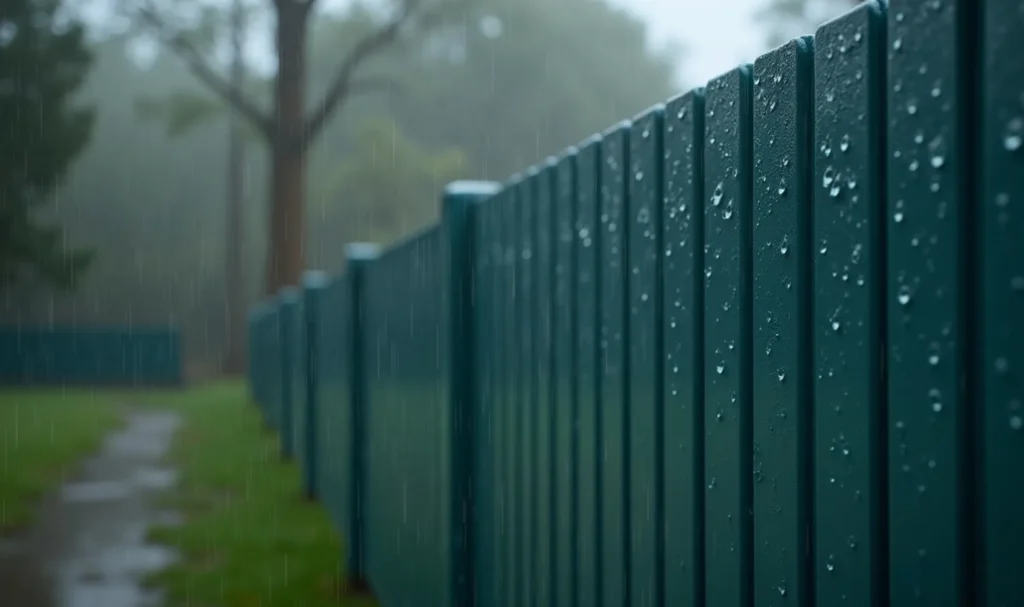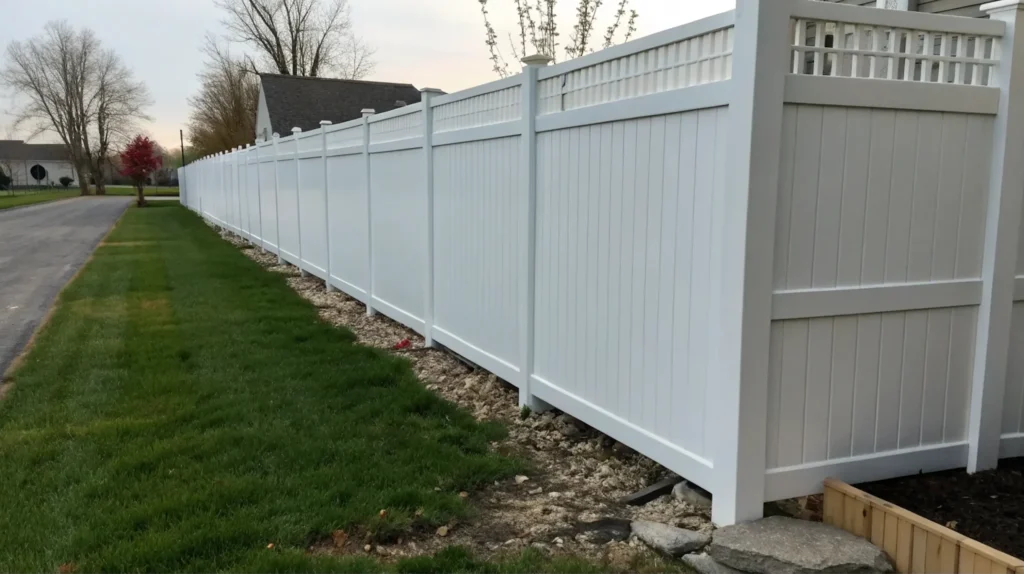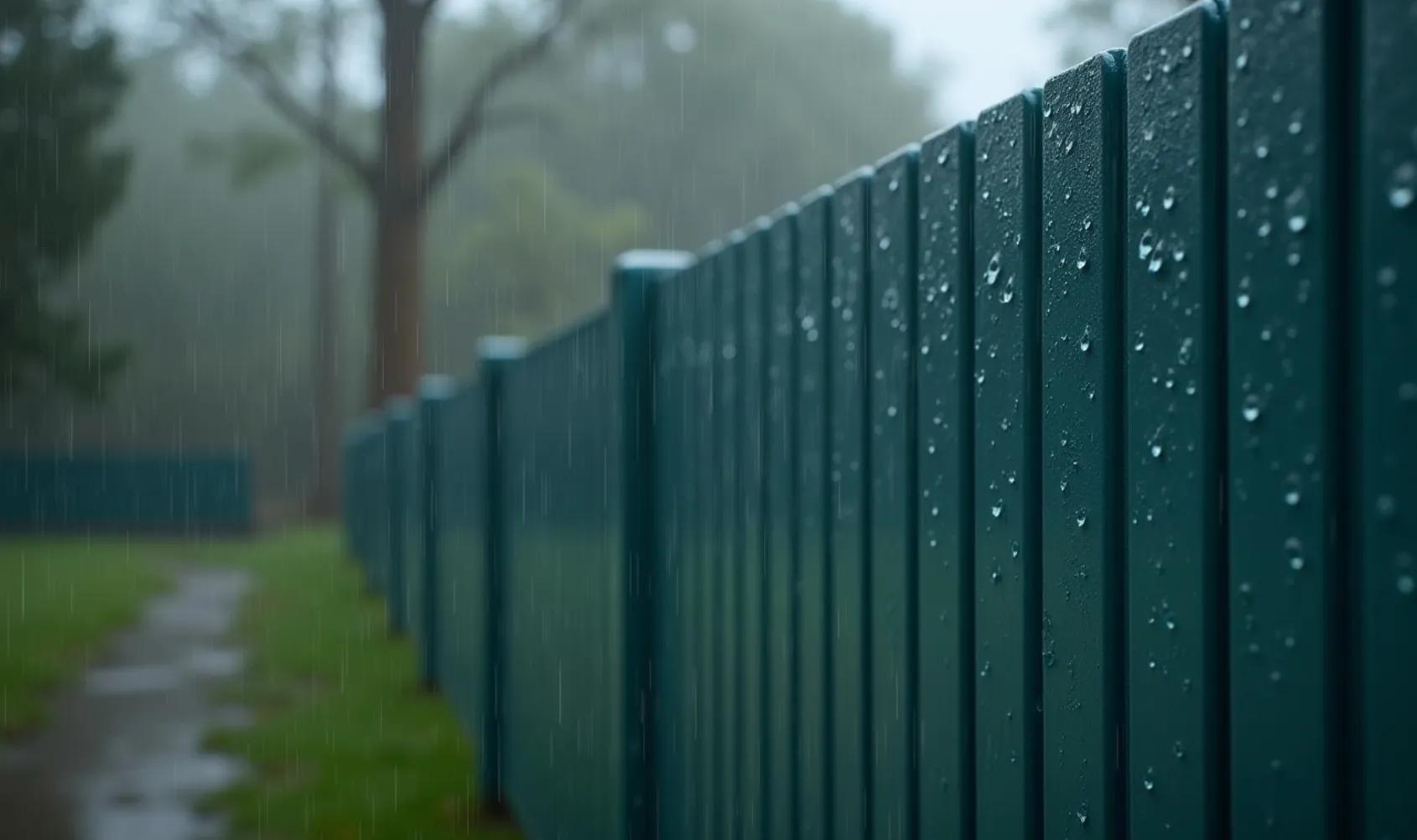
When it comes to fencing, durability is a top priority—especially in areas prone to harsh weather conditions. I’ve always been curious about how vinyl fences perform in extreme weather. From heavy rain to freezing temperatures, vinyl fences have gained a reputation for being low-maintenance and long-lasting. Vinyl fences are highly resistant to harsh weather conditions, including heavy rain, snow, and UV exposure, making them a reliable choice for homeowners. In this article, I’ll explore how vinyl fences handle different weather challenges, their advantages over traditional materials, and tips for ensuring their longevity.
How Does Vinyl Perform in Heavy Rain and Humidity?
I’ve seen firsthand how heavy rain and high humidity can damage traditional fencing materials like wood. Wood fences often rot, warp, or develop mold when exposed to moisture. Vinyl, however, is inherently resistant to moisture. Vinyl fences are non-porous, meaning they do not absorb water, which prevents rot and mold growth even in the wettest climates. Additionally, vinyl’s smooth surface allows water to slide off easily, reducing the risk of water damage and maintaining its structural integrity over time.
Unlike wood, which can swell and warp when exposed to moisture, vinyl remains stable and unaffected. This makes it an ideal choice for regions with frequent rainfall or high humidity levels. Metal fences, while durable, can rust over time when exposed to water, requiring regular maintenance to prevent corrosion. Vinyl, on the other hand, requires no such upkeep, making it a cost-effective and hassle-free option.
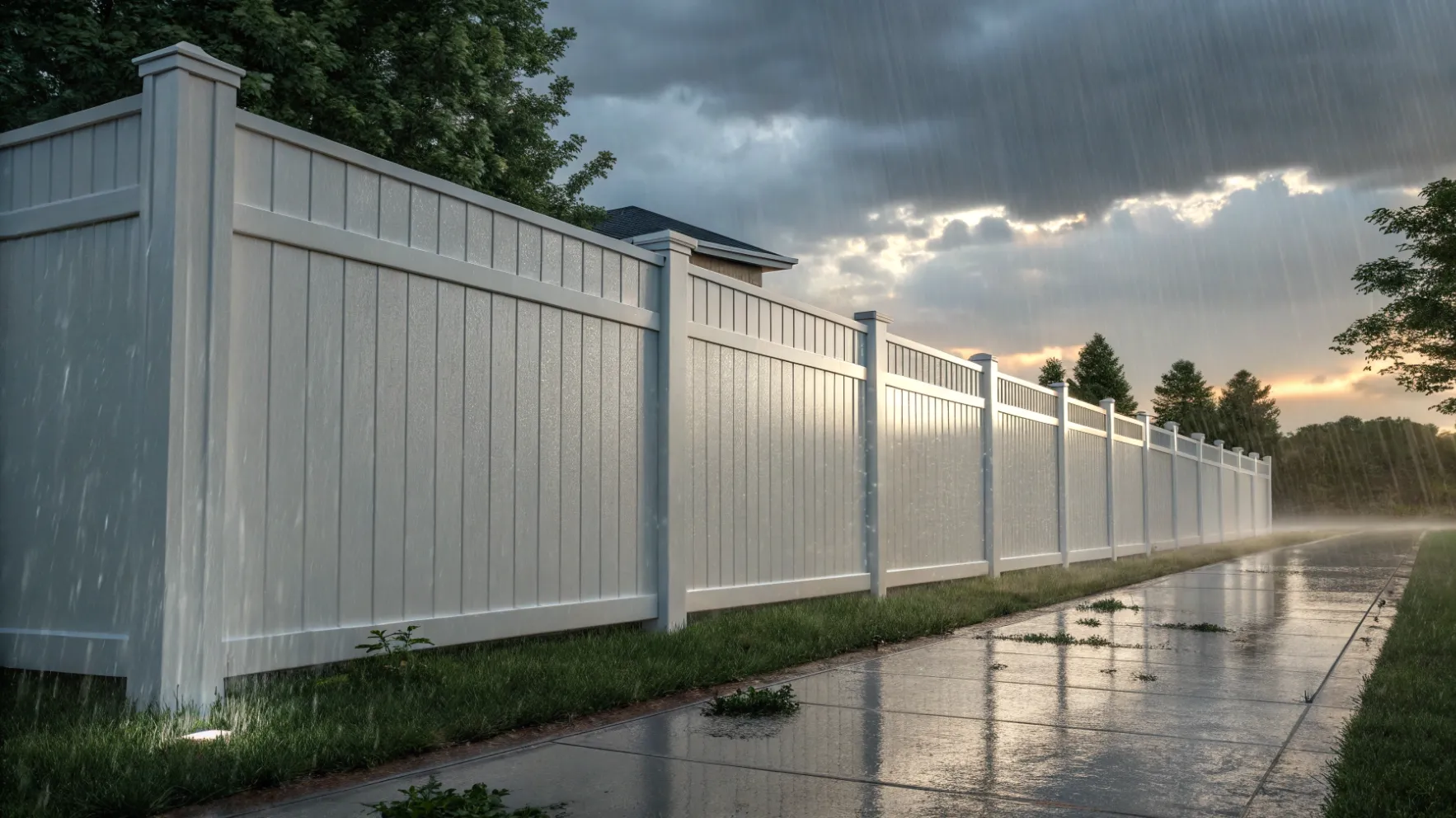
| Material | Performance in Heavy Rain |
|---|---|
| Vinyl | Resistant to rot and mold |
| Wood | Prone to rot and warping |
| Metal | Can rust over time |
Can Vinyl Fences Withstand Snow and Freezing Temperatures?
Living in a region with harsh winters, I’ve always wondered how vinyl fences hold up in snow and freezing temperatures. Snow and freezing temperatures can cause materials like wood to crack and metal to become brittle. Vinyl, on the other hand, is designed to handle extreme cold. Vinyl fences remain flexible in freezing temperatures, preventing cracks and breaks that are common with other materials. Unlike metal, vinyl does not rust, and unlike wood, it does not absorb moisture that can freeze and expand, causing damage.
In snowy climates, vinyl fences require minimal maintenance. Wood fences, for example, may need to be sealed or treated to prevent moisture absorption, while metal fences can become brittle and prone to cracking in freezing temperatures. Vinyl’s durability in cold weather makes it a practical choice for homeowners in northern regions or areas with harsh winters.
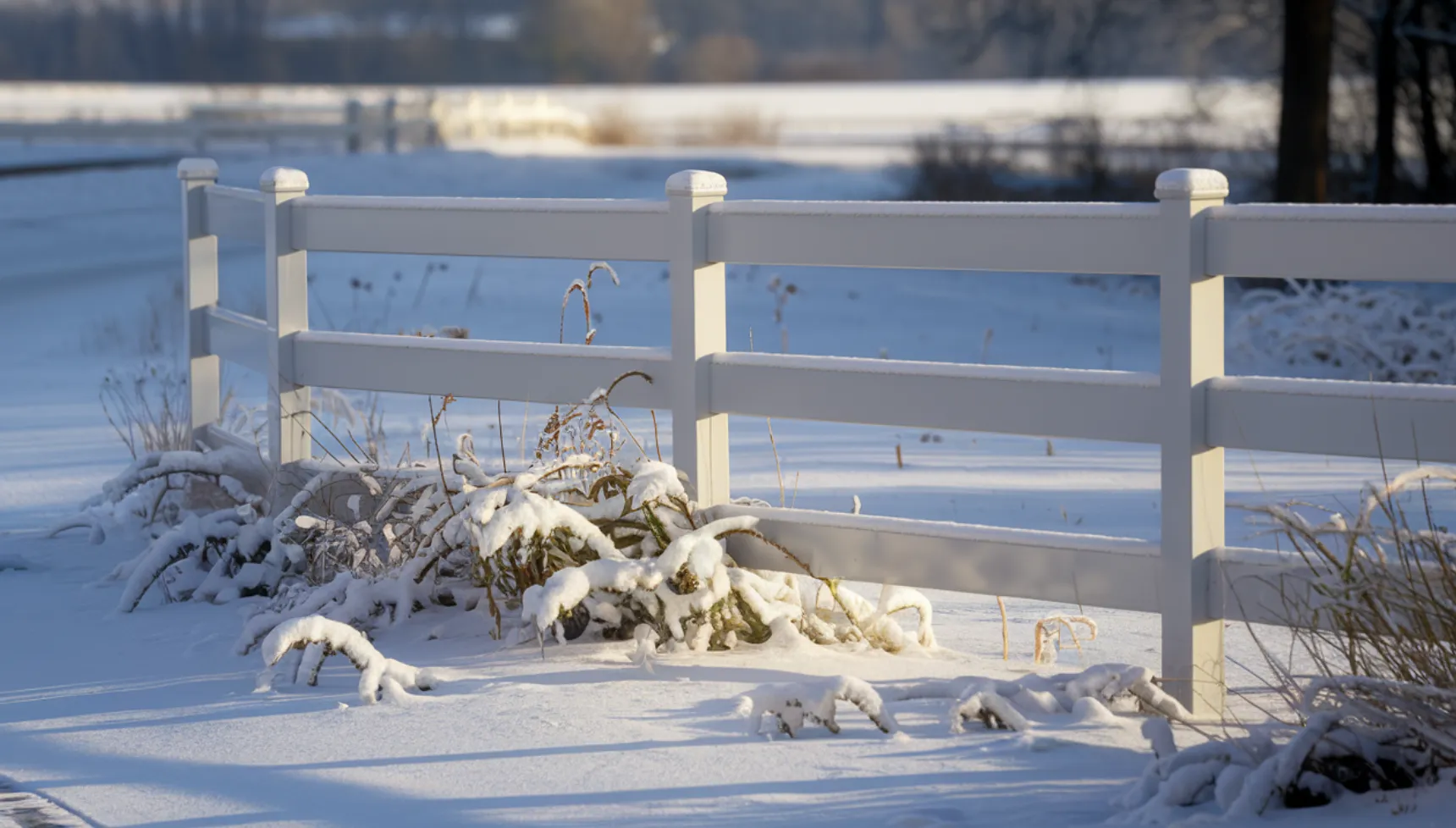
How Does Vinyl Hold Up Against UV Exposure and Heat?
I’ve always been concerned about how fencing materials perform under intense sunlight. Prolonged exposure to sunlight can cause some materials to fade, warp, or weaken. Vinyl fences are engineered to resist UV damage. High-quality vinyl fences are treated with UV inhibitors, which prevent fading and maintain their color and strength even in intense sunlight. Additionally, vinyl does not expand or contract significantly with temperature changes, ensuring it remains stable in hot climates.
Wood fences, while natural and aesthetically pleasing, are prone to fading and cracking when exposed to UV rays. Metal fences, on the other hand, can become extremely hot in direct sunlight, making them uncomfortable to touch and potentially hazardous. Vinyl’s ability to withstand UV exposure and heat makes it an excellent choice for sunny climates or areas with long summers.
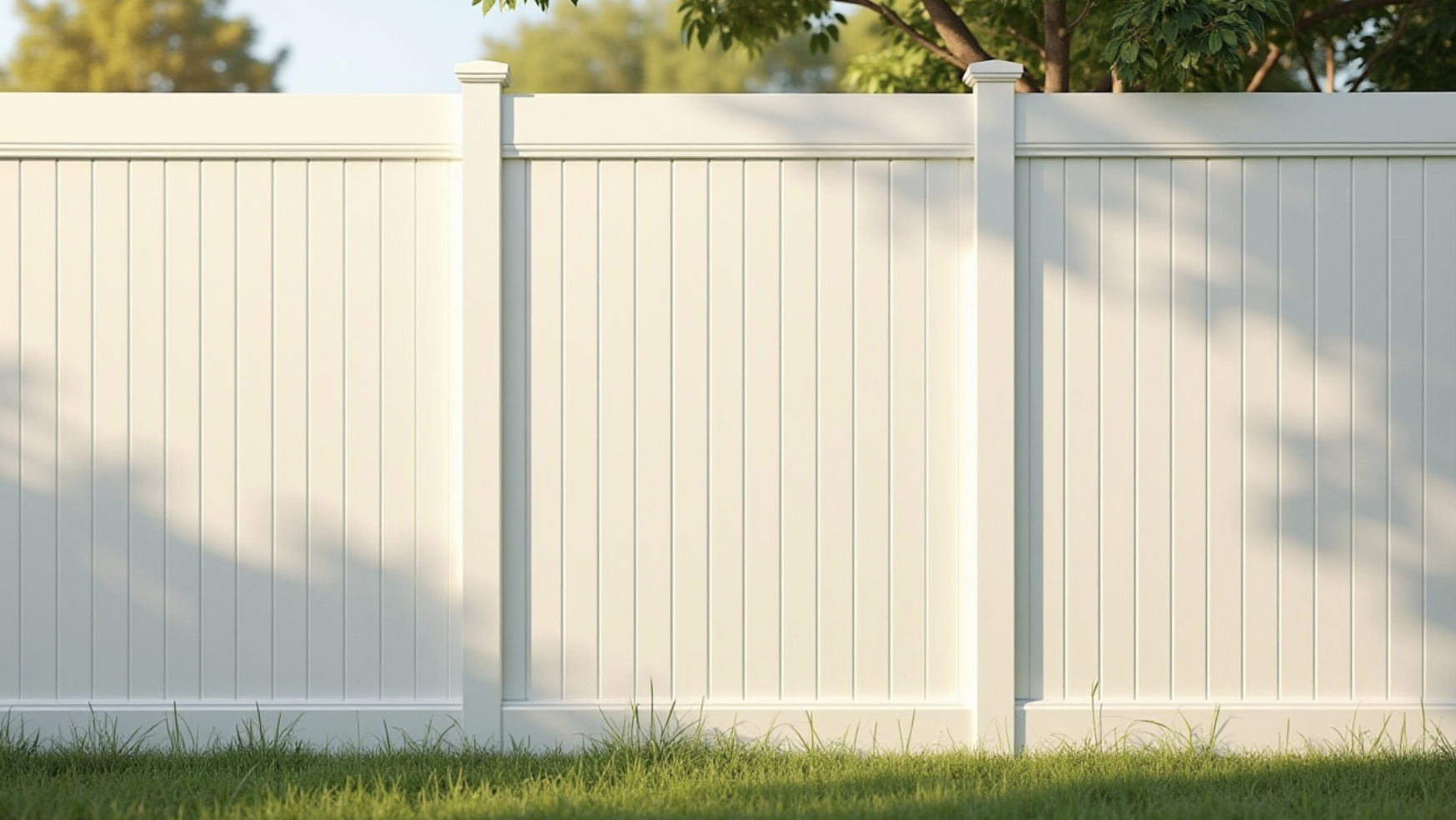
| Material | Performance in UV Exposure |
|---|---|
| Vinyl | Resistant to fading and warping |
| Wood | Prone to fading and cracking |
| Metal | Can become hot and fade |
What Are the Long-Term Benefits of Vinyl Fences in Harsh Weather?
From my experience, vinyl fences offer long-term benefits that make them a cost-effective and reliable choice for harsh weather conditions. Unlike wood or metal, vinyl fences require minimal maintenance and do not need painting, sealing, or rust prevention. Their durability ensures they remain functional and attractive for decades, even in the most challenging climates.
Wood fences, while initially cheaper, require regular maintenance such as staining, sealing, and repairs to prevent rot and insect damage. Metal fences, though durable, are prone to rust and may need repainting or rust treatment over time. Vinyl fences, on the other hand, retain their appearance and structural integrity with minimal effort, saving homeowners time and money in the long run.
Tips for Maximizing the Lifespan of Vinyl Fences
While vinyl fences are inherently durable, I’ve learned that there are steps homeowners can take to ensure they last even longer. Regular cleaning with mild soap and water can prevent dirt and grime buildup, maintaining the fence’s appearance. Inspecting the fence periodically for any signs of damage, such as cracks or loose panels, allows for timely repairs and prevents minor issues from escalating.
In areas with heavy snowfall, gently removing snow from the fence can prevent excessive weight buildup, which could potentially cause damage over time. Additionally, avoiding the use of harsh chemicals or abrasive cleaning tools can

